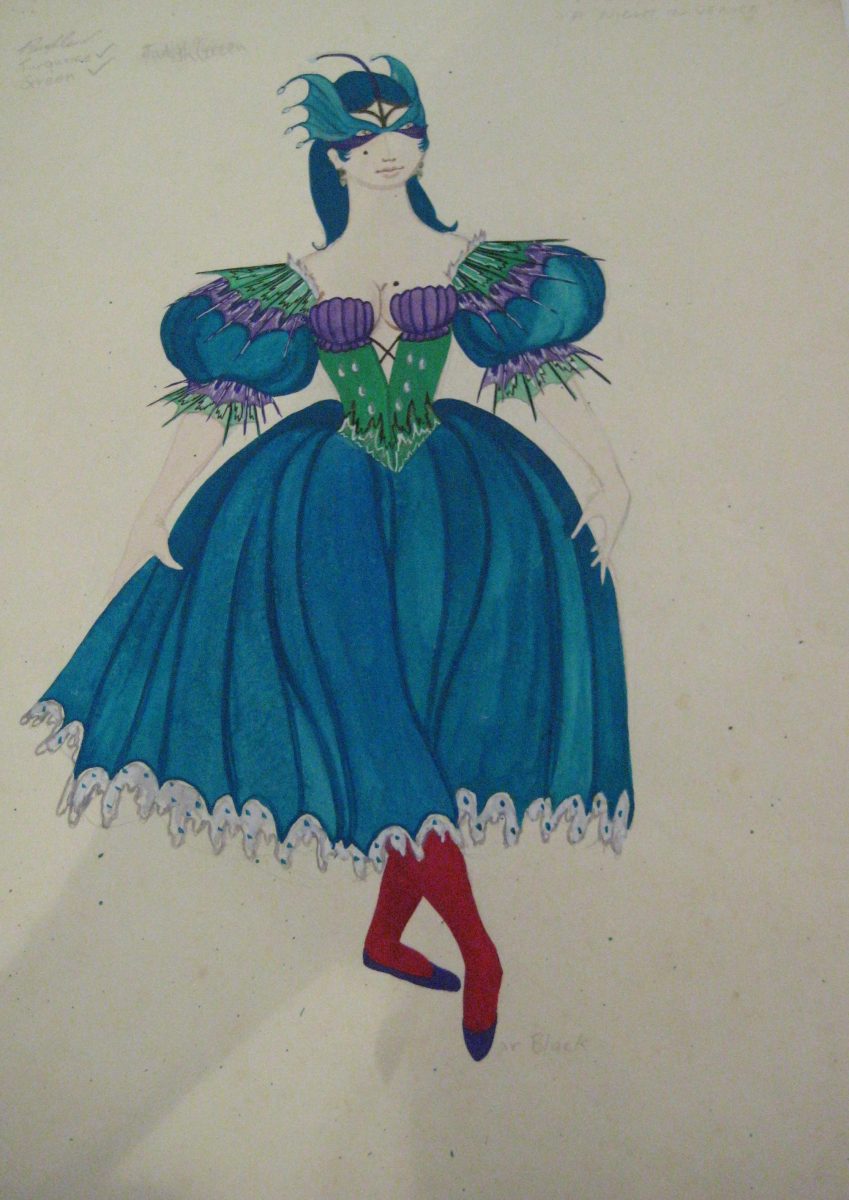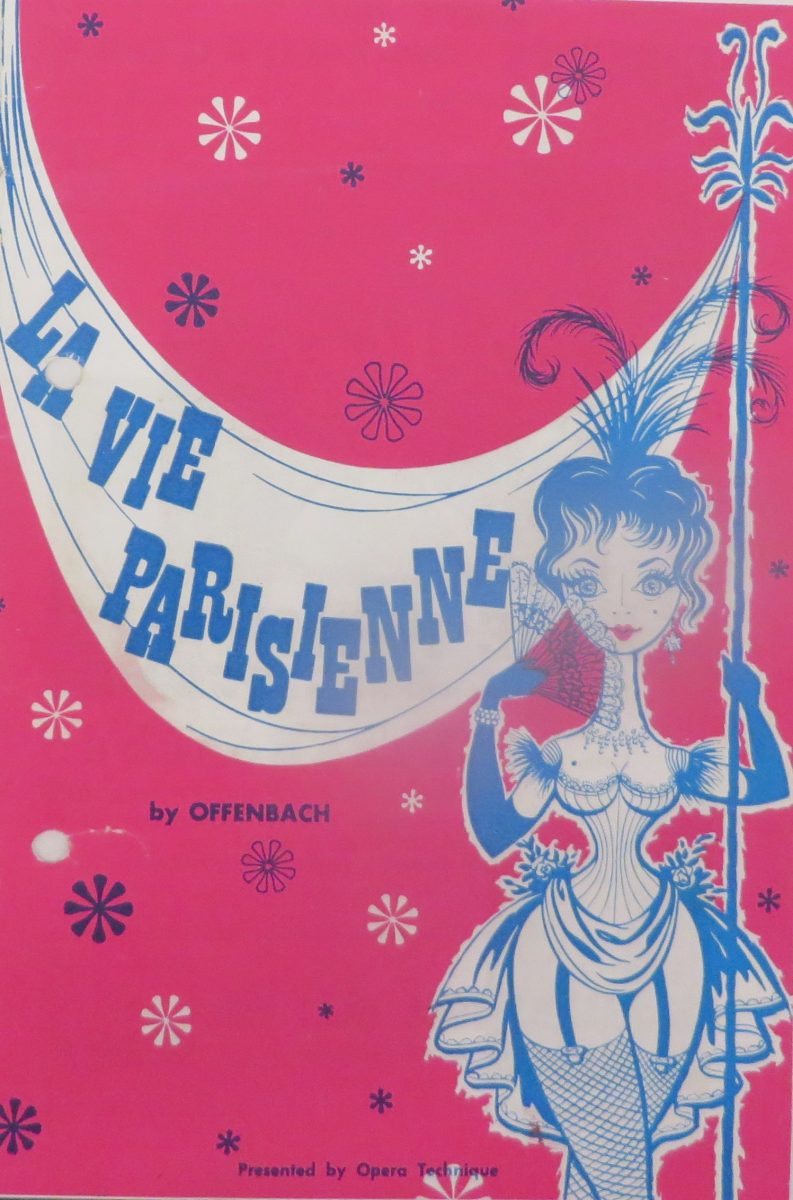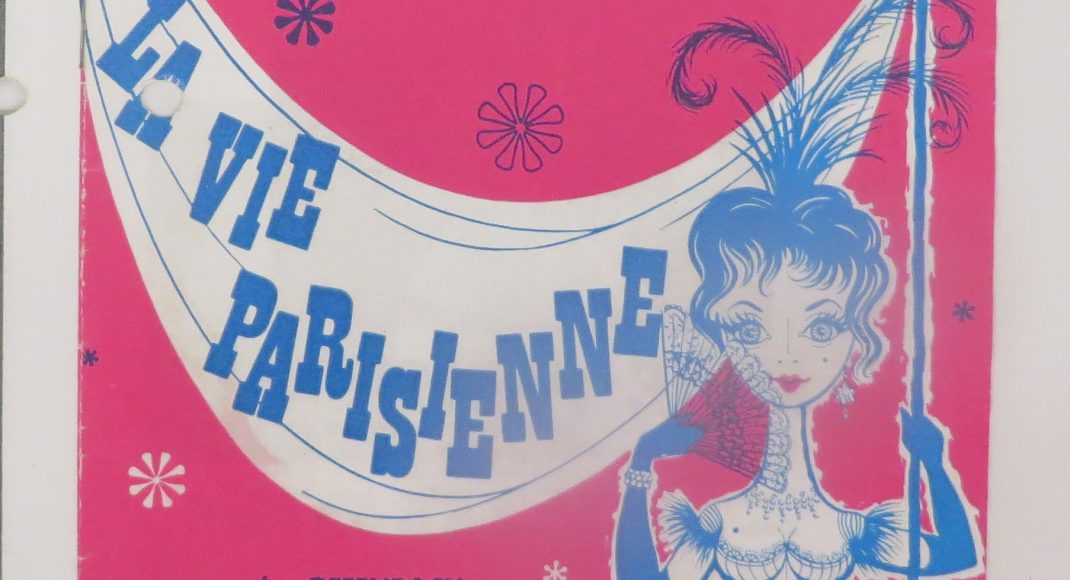I first met Edith Campbell in 2018 when I delivered the first Russell Kerr Lecture in Wellington. The day after the lecture Edith sent me a collection of items from productions by Opera-Technique Inc., the operetta company for which Kristian Fredrikson designed his very early shows, and with which Edith appeared as a performer. The material, which included press clippings and a booklet listing Opera-Technique productions between 1954 and 1994, was extremely helpful in my research, clearing up a number of points about those early Fredrikson years.
Edith has now read the Fredrikson book and has written a quite fascinating piece giving a personal account of what it was like performing with Opera-Technique. One section in particular suggests to me that, even in 1962 with his work on A Night in Venice, Fredrikson was involved in researching an accurate background for his designs. I am thrilled to be able to post Edith’s reflections on this site. And as more and more comments come in about the book I can’t help feeling that we need another book!
Read Edith’s story below.
Michelle Potter, 27 September 2020
Kristian Fredrikson, Designer—by Michelle Potter
Basking in reflected glory! Reflections on reading this book
by Edith Campbell, Wellington
Who does not get a kick out of being in some way, however small, connected with a special event or with a ‘star’ reported in a publication? In 1963, having recently arrived in Wellington from my hometown Edinburgh, I joined a Wellington Polytechnic choral singing evening class (housed in the Wellington Technical College) which I discovered was also the amateur group Opera-Technique. Formed by enthusiastic former students of the Wellington Technical College (now Wellington High School), they had already presented a few musical productions in their spacious School Hall; Strauss’ A Night in Venice was their current project. Rehearsals involved working closely with Musical Director Harry Botham (a double-bass player in the National Orchestra and teacher at the Polytechnic) and of course with producer Harry Baker, referred to by Michelle Potter as teacher and mentor of the young Kristian Fredrikson as the costume designer. I do remember occasionally seeing this dark-haired young man about the place—of course we all admired his work—colourful—imaginative—sparkling!

As was common at that time, many of the cast were very ‘handy’ with their sewing machines. Mrs. Daphne Lawrence—our most excellent wardrobe mistress—a trained tailoress—was a whizz at interpreting the designer’s drawings; she produced practical patterns and cut out the fabrics. There were several real dressmakers in, or attached to, the company who did the more intricate work, but quite a number of the cast received their cutout costumes to sew together. What fun to stitch ribbons of sequins in swirls on the supposedly bare-bosoms of we show girls and insert a mirror into our garters to catch the eye of perspective clients! (Imaginative touches Kristian!) It was exciting to be so intimately involved in the production in this way in addition to singing and dancing in it—accompanied by a section of the National Orchestra no less!
Being presented in a School Hall the general public did not comprehend that the production not only was performed entirely by adults, but was extremely professional in every area, and so Opera-Technique took the bold step of taking their next production—Offenbach’s La Vie Parisienne—into the city to perform in the Opera House! (took many years to pay off the debt!) Again the stage was filled with Kristian’s scintillating designs. Allan Lees designed the set. At this time overseas companies fairly frequently brought plays and musicals to the country’s main centres. From well-known institutions, in their homeland’s ‘down time’, they found it profitable to ‘tour the colonies’. The thespians resident in NZ were extremely well-versed in their craft, but, as the small population could not support them professionally (i.e. full time), the general populace saw them as amateurs and asked—if one may draw a Biblical analogy—‘can any good thing come out of Nazareth?’ (John 1: 46). The standard of the shows put on by these so-called amateurs was of a high calibre in every respect both on stage and behind the scenes—set and costume design, lighting, stage management, even front-of-house—could often put the overseas companies to shame. It was a long time before the ‘Nazareth’ concept was overcome!
So this was the vibrant theatre scene into which the young Kristian was introduced—one where his excellent talents were recognized and fostered. An early illustration in the book shows his designs for the Kings in Menotti’s gem Amahl and the Night Visitors. They were seen and appreciated widely for several years as Opera-Technique presented the lovely Christmas story in many churches and halls in the greater Wellington area (had a simple very adaptable set by Allan Lees). Along with many singers and those in related stage crafts, Kristian’s experience with Opera-Technique stood him in good stead when he spread his wings to fly across the Tasman and further.
Be life humdrum or exciting, whatever makes a person tick—whatever motivates them, is always intriguing. Based on meticulous research, Michelle tells Kristian’s story beautifully. Every performer must ‘get under the skin’ of any character he or she plays. A costume that is ‘just right’ is itself a physical manifestation of that skin and Kristian had the knack of creating that skin with his designs. While spiritually getting under the skin, being wrapped in it by donning a costume adds a tremendously reassuring dimension. After a performance the audience will remember the expressiveness of a sonorous voice, the grace of a movement, but the visual appearance is an essential element in recreating the memory. With her liberal use of direct quotes from Kristian’s writings and reported conversations, Michelle gives us insight into his intense passion for attention to detail and his extensive studies to be very aware of the background of the stories he was illustrating, also that of the writers and composers—he worked with the complete picture for his references.
Needless to state, Kristian loved to return to NZ to fill commissions from the RNZ Ballet and the dancers and the audiences loved it too! In Peter Pan, Sir Jon Trimmer was in his element as he strutted about in his exuberant Captain Hook costume, complete with be-feathered hat. In real life Jon is delightfully comedic with more than a touch of mischievousness and his costume caught a whiff of that too!
It is often reported that a block-buster movie has a cast of thousands. A considerable proportion may actually appear on the screen (or be consigned to the cutting room floor). Though perhaps not strictly part of the ‘cast’, many of the thousands are the indispensable support people. By the time the last chord is played to accompany the rolling credits seldom does one patron remain in the cinema! Admittedly the ‘rolling’ is too fast to read individual names, but one glimpses titles such as ‘Best Boy’ or ‘caterer’. So sadly so much passion and creativity is not immediately acknowledged. Hopefully theatre audiences go home clutching their programs to peruse later the list of all the off-stage people who contributed so much to their pleasure!
Let us be immensely grateful to Michelle for her words and wonderful selection of illustrations to not only recognise Kristian’s accomplishments, but to remind us of the great number of talented and dedicated people who brought his designs to life in the many facets of the productions. The performers on stage receive applause—sometimes on the last night of a season, conductors, designers and stage managers are invited on stage also and a wave is given in the direction of the lighting box. Maybe a representative of all the ‘other people’ could appear. We all do what we do to express and share our love of beauty … but it is nice to occasionally receive at least a sliver of that light of reflected glory!!
*************************************
Featured image: Front cover (detail) of the program for the Opera-Technique Inc. production of La vie parisienne, 1963. National Library of New Zealand, Eph-A-OPERA-OT-1963. The full cover image is below.

